Whenever you set out to create something distinctive, unique or new, a few avenues of approach present the best chance of achieving your goal.
You can make it aesthetic: bet heavily on visual design and style and hope the allure of eye candy will make your product noticeable. You can make it engrossing: by integrating systems and mechanics intricate enough to enrapture your target audience. You can even – though with annually diminishing chances of success – try to make it original: something no other product of its kind has attempted (or accomplished) before...
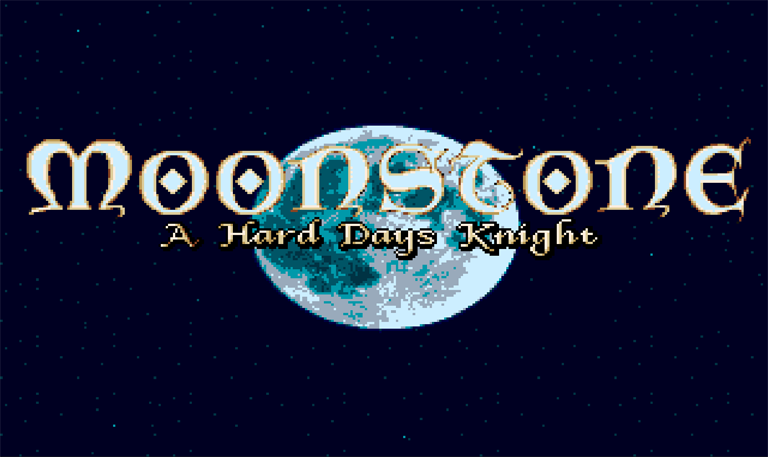
Or, if you're Moonstone: A Hard Days Knight, you can just do all three at the same time.
The 1991 Action Game With Stats by animator, artist, developer, Canadian and all-around one-man-band, Rob Anderson, can be best summed up as the intersection between the board game Talisman and a white-knuckle session of Mortal Kombat.
In the game, you play a knight tasked with retrieving the mystical (titular) moonstone and bringing it back to some druids hanging out at Stonehenge. To get the stone, you have to defeat the guardian of the Valley of the Gods. To get into the valley, you have to collect four keys. And to collect the keys, you must battle a varied roster of monsters who guard lairs that (might) contain them.
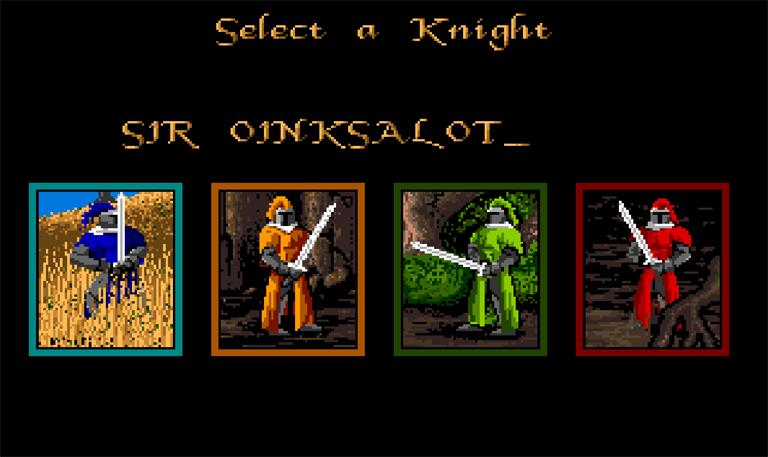
If the premise sounds simple, it's only because it is: in terms of overall design, Moonstone is a straightforward game that lasts about four hours on average, per session. In terms of gameplay, however, the game surprises and delights with well thought-out mechanics, astounding (for a game of its kind) depth and neat, intuitive touches that elevate it above rank-and-file action games and into the elusive pantheon of one-of-a-kind singularities.
To begin with, the game stars four knights (whom you can name) who start their quest in four different corners of the world map. If you play alone, the other three knights are controlled by the computer, but Moonstone also offers a hot-seat arrangement for up to four players (meaning there could be two human players competing, each controlling two knights, or three to four individuals going head to head... to head... to head).
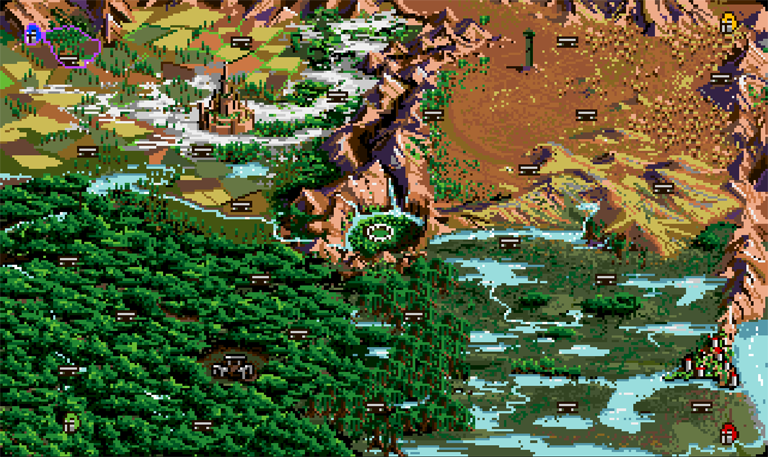
Knights all begin the game with some throwing daggers, a longsword and leather armour and are defined by three stats: strength, which determines how much damage you deal; constitution, which dictates how many hitpoints you have; and endurance, which measures how far you can travel during your turn. As you defeat monsters and clear lairs, you are awarded experience – each point of which can be used to increase a statistic. Clearing lairs can also net you money, which can be spent on healing or better equipment in the game's two towns (or simply gambled away); and magical items (such as Rings of Protection, Amulets of the Wyrm, Gems of Seeing or the much-sought-after Sword of Sharpness).
Each knight begins the game with four lives. Should you lose one (which the unforgiving difficulty ensures is easy to do); you can – at any time – return to your starting point to replenish them.
The knights move once per day, in the same order, in succession. Every three days, the phase of the moon advances, some of which can make certain monsters more powerful and harder to deal with (such as the Rat-Men during a full moon).
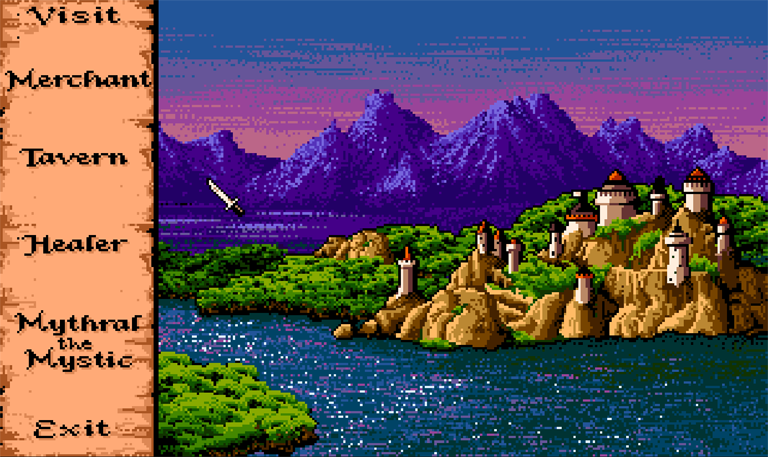
In terms of monster types, there aren't too many (seven, if memory serves) and – for the most part – the distinctive ones are restricted to certain areas of the map (with only the orc-like Troggs appearing everywhere). To wit, in the north-west fields (the blue knight's domain) you encounter charging War Beasts. In the (yellow knight's) north-east — Trolls (puprle giants with really big sticks); and Baloks (minotaur-like monstrosities prone to hopping). The (red knight's) south-east and (green-knight's) south-west, on the other trotter, are Rat-men/Mud-men central.
As certain monster types have moves that will insta-kill (especially in the beginning, when knights don't have too many hitpoints),
the blue and yellow knights typically have an easier time getting started, with the red and green unfairly hindered by the super-creepy Mud-men
(whose insta-kill ignores hitpoints and is proximity-triggered — meaning you could have enough hitpoints to withstand
dragon fire and still get dragged under just because you were standing too close).
On top of the monsters guarding lairs, past a certain point in the game, a red dragon puts in an appearance, gliding back and forth across the map and (occassionally) ruining a random knight's day.
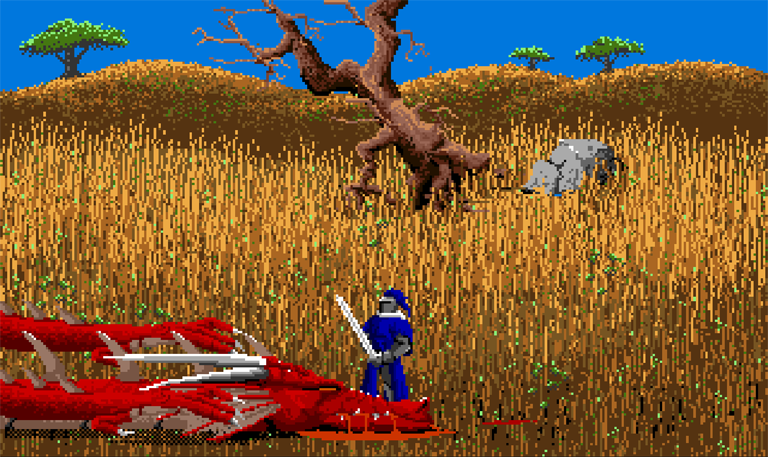
Combat is fast, visceral and extremely gory – even by modern standards – and can lead to knights being decapitated, strangled, burnt, smashed, pulped, impaled or even eaten. Thankfully, as Moonstone is politely Canadian, a simple "gore: off" toggle is provided in the main menu for players who want to indulge the gameplay but skip all the squishy, scorchy, squirmy details.
Despite its action game roots, Moonstone's mechanics do allow a more strategic mindset to prevail. Since the game's ultimate objective is retrieving the stone and bringing it back to Stonehenge, while defeating everything on the map is viable, waiting until someone else does and then taking it from them (either via a duel or a handy-dandy Scroll of Acquisition); is just as valid.
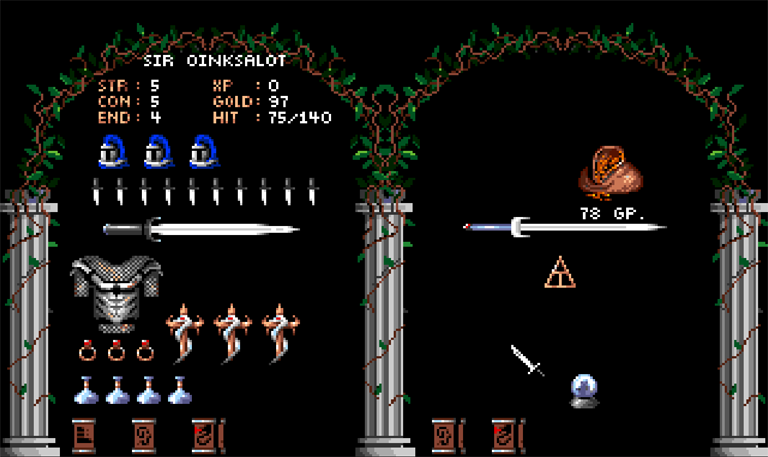
For such a straightforward little game, Moonstone: A Hard Days Knight is surprisingly innovative, fun and – most impressively – timeless. I played it just now, to grab screens for the review, and even though the lax hit detection and insta-kills were a bit irritating, the 34 (!) year-old game played as smooth as if it were made yesterday.
If you enjoy fantasy combat, visceral action or simply have three friends and nothing interesting to play, consider giving Moonstone a go. It might not be a complex proposition, but – where visual appeal, design and originality are concerned – it remains a wholly unique milestone in gaming: a glorious, gory convergence no game has come close to dethroning in three decades and change.
Pig Recommends:
-
-if you do end up playing Moonstone, please use the Amiga version (whether emulated or from one of The Company's nifty self-contained executables); as it is simply better than the DOS port;
-
-practicing movement and attacks (especially the forward and upward thrusts and the overhead slash), as they are key to defeating certain monsters; for Trolls, Baloks and spear-wielding Troggs, get in the habit of moving vertically and thrusting forward once before moving again (also: in Troll/Balok fights never stand still at the beginning or you'll get smooshed); for War Beasts, use the overhead slash (if you time it right, they sorta run into it and die after you've attacked); Mud-men are best dispatched at a distance (overhead slash), because touching them can trigger their insta-kill move (again: move – attack once – move); and the dragon is simply a pain: try to stave off dealing with it until you have an Amulet of the Wyrm (which halves dragon damage) and max hitpoints (and then either park at the top/bottom and walk vertically to dodge its fire and overhead slash when it stops or park yourself outta claw's reach and thrust upwards when it tries to bite/burn you);
-
-visiting The Moonstone Tavern for more indepth info on the game and how to play it; it's been around for 23 years and is chock-full of useful information;
